Dashboard
Your Dashboard is your Actito homepage. You will arrive here after connecting to your license.
Thanks to key performance indicators (KPIs), this board will give you a global and visual overview of the activity of your contacts database (Profiles) and of ongoing campaigns.
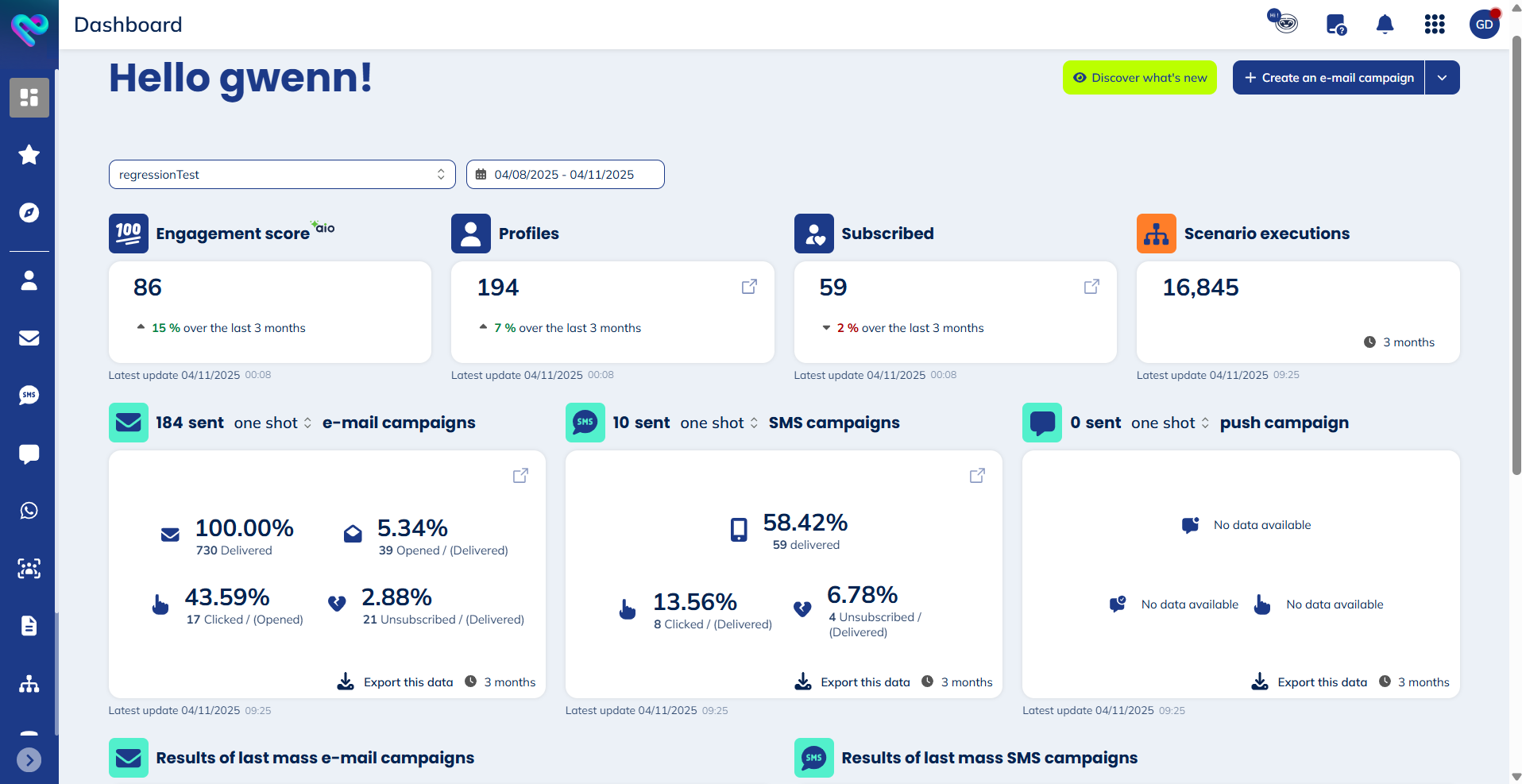
In addition to the indicators, you will find two shortcuts on your dashboard. One is redirecting you to the "What's new" section of the documentation and the other one will let you create a new campaign.

By default, the proposed campaign type is an email campaign, but you can change the campaign type by clicking on the arrow. Then simply choose a campaign type from the list of campaigns available in your license.
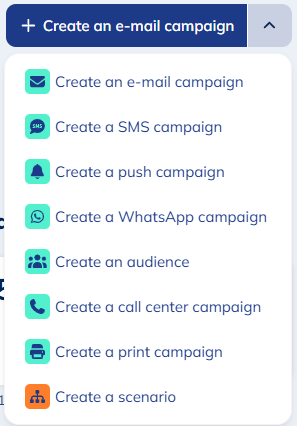
The KPI's overview is related to a specific Profile database. If you use various databases, it is necessary to select the one your are interested in with the drop-down menu at the top of your screen. On your first visit, your dashboard will display the database with the biggest amount of Profiles in it. After that, the board will remember the last database displayed during your previous visit.
On top of choosing the database, you will also have the opportunity to select the period of time for which you want the indicators to be shown. By default, this period of time is set on three months. If you choose another period of time, the board will remember the period you chose during your previous visit.
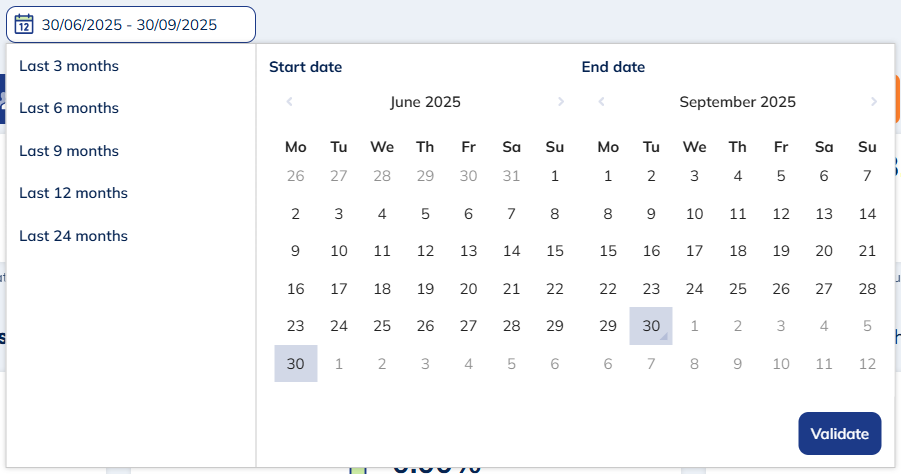
You will be able to choose a defined period of time (3 months, 6 months, 9 months, 12 months or 24 months) or a period of time of your choice. By default, the data retention time in an Actito license is 24 months. Therefore, this is the maximum period of time.
The data from the first and last day you choose will be included in the statistics.
Indicators
At first sight, 7 performance indicators are displayed. They represent the evolution of your activity.
Actito engagement score
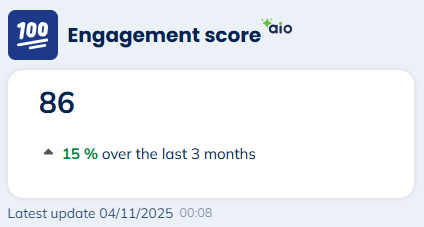
This indicator gives you the average engagement score of your database. This is an index ranging from 0 to 100 which allows you to measure the digital activity of your profiles, based on engagement recency, regardless of the communication channel. This score is computed since the beginning of your license (it does not take the period of time you chose into account).
A percentage shows the evolution of this number over the period of time you chose.
Profiles

This indicator gives you the number of profiles in your database, without taking into account the period of time you chose.
A percentage shows the evolution of this number over the period of time you chose.
Subscribed
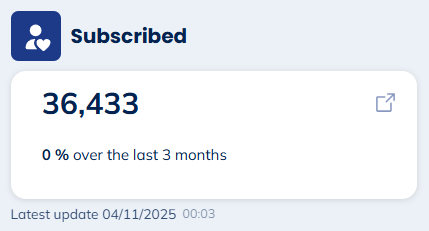
This indicator gives you the number of profiles who are subscribed to at least one subscription, without taking into account the period of time you chose. Any profile with several subscriptions will only be counted once.
A percentage shows the evolution of this number over the period of time you chose.
Scenario executions
This indicator gives you the total number of scenario executions over the chosen period. If a profile went through more than one scenario, it will be counted for each scenario.
To be counted, the trigger date of the scenario must have taken place during the chosen period.
If a profile goes through the same scenario several times, it will be counted only once.
Sent email campaigns
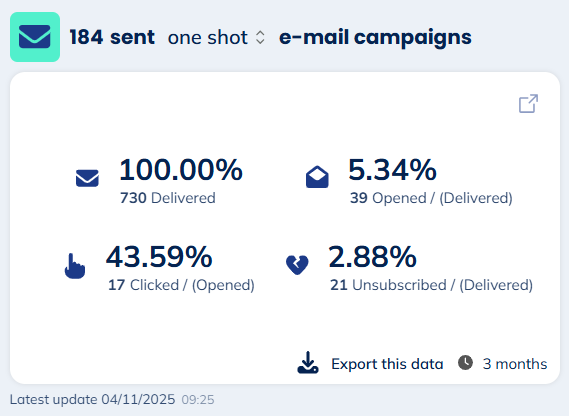
On the one hand, this indicator gives you the number of email campaigns sent over the chosen period.
On the other hand, it gives precisions about:
- the email delivery rate (delivered emails/sent emails) and the absolute number of delivered emails
- the email opening rate (opened emails/delivered emails) and the absolute number of opened emails
- the email clicks rate (clicked emails/delivered emails) and the absolute number of clicked emails
- the unsubscribe rate (unsubscribe/delivered emails) and the absolute number of unsubscribed emails
In order to be able to observe the evolution of campaign performances, you have the possibility to filter the dashboard campaigns by type: one shot, scenarized or transactional. By default, the campaign type is set on one shot, but if you choose another type, the board will remember the one you chose during your last visit.
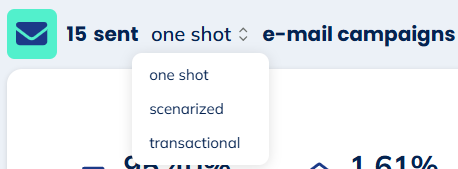
When choosing the scenarized or transactional campaign type, the number of sent email campaigns coincides with the number of campaigns that were in the tab 'In progress' during the chosen period, even if they did not trigger interactions during that period.
Moreover, you have the opportunity to export the data in a .csv file containing the email delivery rate, absolute number of delivered emails, email opening rate, absolute number of opened emails, email clicks rate (in opened and delivered emails), absolute number of clicked emails, unsubscribe rate and absolute number of unsubscribed emails for each campaign according to the chosen campaign type over the chosen period of time.
Sent SMS campaigns

This indicator gives you the number of SMS campaigns sent over the chosen period.
It also gives details about:
- the SMS delivery rate and the absolute number of delivered SMS
- the SMS click rate and the absolute number of clicked SMS
- the unsubscribe rate and the absolute number of unsubscribed SMS
In order to be able to observe the evolution of SMS campaign performances, you have the possibility to filter the dashboard campaigns by type: one shot, scenarized or transactional. By default, the campaign type is set on one shot, but if you choose another type, the board will remember the one you chose during your last visit.

Moreover, you have the opportunity to export the data in a .csv file containing the campaign name, absolute number of delivered SMS, absolute number of clicked SMS, absolute number of unsubscribed SMS, delivery rate, SMS click rate and unsubscribe rate for each campaign according to the chosen campaign type over the chosen period of time.
Sent push campaigns
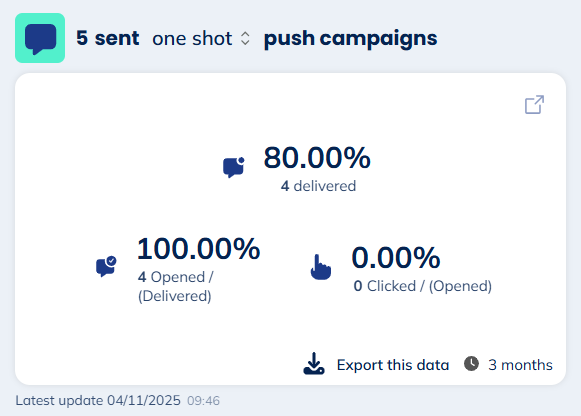
This indicator gives the number of push campaigns sent over the chosen period.
The push metrics are computed as from 05/03/2025. You will not see any data of the campaigns that were sent before that date.
It also gives details about:
- the push delivery rate and the absolute number of delivered push
- the opening rate (opened push/delivered push) and the absolute number of opened push
- the clicking rate (clicked push/opened push) and the absolute number of clicked push
In order to be able to observe the evolution of campaign performances, you have the possibility to filter the dashboard campaigns by type: one shot or scenarized. By default, the campaign type is set on one shot, but if you choose another type, the board will remember the one you chose during your last visit.
Here again, you have the possibility to export the data in a .csv file containing the absolute number of delivered campaigns and the delivery rate for each campaign according to the chosen campaign type over the chosen period of time.
The date and time of the latest update is displayed below each indicator.
Clicking on the Profile and Subscribed indicators will direct you to a detailed report, while clicking on the next indicators will open the corresponding managing interface.
Last campaigns results
Under the indicators, you will see the details of your 7 last email and SMS mass campaigns (even if they did not take place in the chosen period).
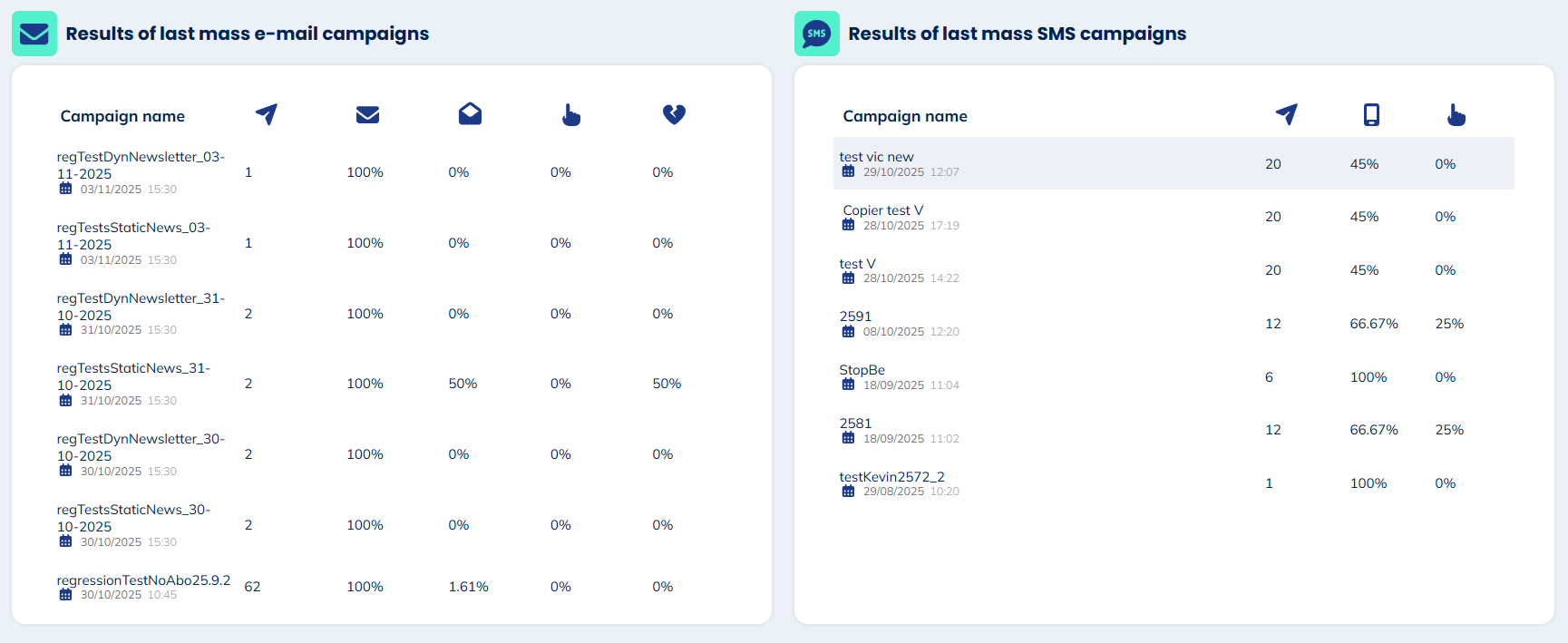
The date and launching time is displayed under the name of the campaign.
You will obtain individual information related to the absolute number of sent emails and the delivery rate (delivered emails/sent emails). For emails, you will also obtain information related to:
-
the email opening rate (opened emails/delivered emails)
-
the email clicks rate (clicked emails/delivered emails)
-
the unsubscribe rate (unsubscribe/delivered emails)
-
If a transaction goal is active, the revenue generated by the email
Clicking on a campaign will direct you to its detailed report.
The dashboard is always related to a database in particular. The email and SMS campaigns displayed here are only those related to the selected database.